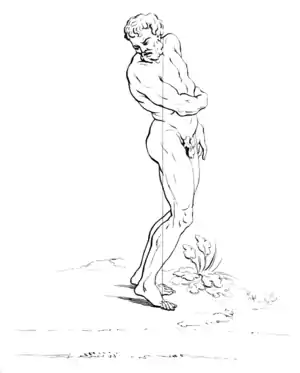Chap. XCV.—Of the easy Motions of Members.
In regard to the freedom and ease of motions, it is very necessary to observe, that when you mean to represent a figure which has to turn itself a little round, the feet and all the other members are not to move in the same direction as the head. But you will divide that motion among four joints, viz. the feet, the knees, the hips, and the neck. If it rests upon the right leg, the left knee should be a little bent inward, with its foot somewhat raised outward. The left shoulder should be lower than the other, and the nape of the neck turned on the same side as the outward ankle of the left foot, and the left shoulder perpendicular over the great toe of the right foot. And take it as a general maxim, that figures

Plate 17.
Chap. 96.
Page 41.
London Published by J. Taylor High Holborn.